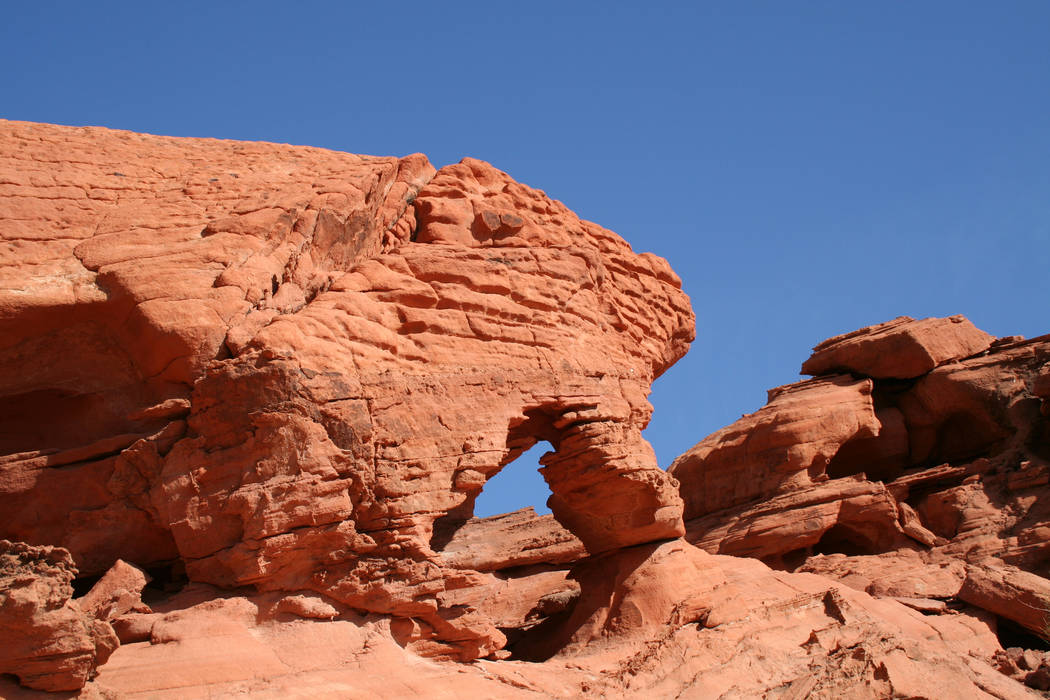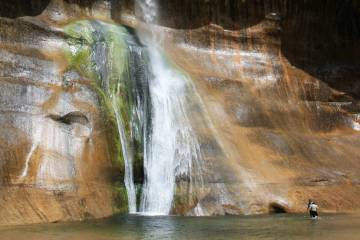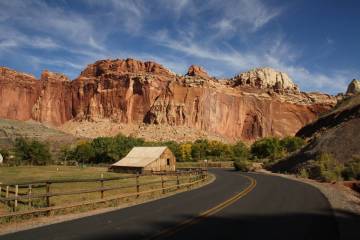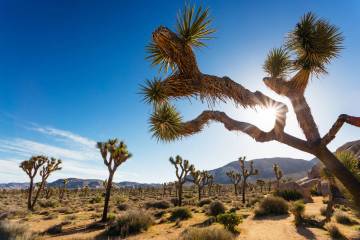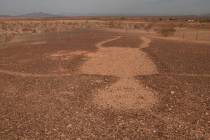Bowl of Fire makes for a peaceful day trip from Las Vegas
Lake Mead National Recreation Area’s Bowl of Fire is similar to the fiery red sandstone formations in Valley of Fire State Park, with occasional outcroppings of yellow, pink and orange, but is more remote and offers much more solitude.
From the parking pullout, head northwest on the faint trail a few hundred yards toward the end of the prominent limestone ridge. Follow the path around to the other side and you will be able to see the Bowl of Fire outcropping, which looks quite dramatic next to the surrounding gray limestone hills and mountains.
You might have to do some route finding here and there, but stay on the path so you don’t trample the fragile cryptobiotic soil. Keep on the route toward the outcropping, entering small washes here and there and then crossing Calville Wash, one of the main drainages of this area.
Continue northwest and then drop into another obvious wash and head upstream. Follow for about a hundred yards or so until all easy progress is blocked, then scramble up the bank, and you have arrived in Bowl of Fire.
■ Directions: From Las Vegas, take U.S. Highway 93/95 south to Lake Mead Drive. Go east on Route 146 for about 10 miles to the Lake Mead National Recreation Area’s entrance station. Drive 0.2 miles and go left onto Northshore Road. Follow for 18.2 miles, until you have just passed mile marker 18, and look for a parking pullout on the left side of the road. This serves as the unmarked trailhead.
■ What to pack: Wear long pants of sturdy fabric for rock scrambling, and hiking shoes or boots with good tread. Elevation is 1,933 feet at the trailhead, nearly as high as Las Vegas, so dress for similar temperatures, and wear a hat because there’s little shade. Bring water and food.
■ Length of stay: Day trip. The hike is 2.2 miles round-trip to the outcropping but offers plenty of options to explore farther.
■ Not to be overlooked: If you don’t get around to this hike until spring, the beavertail cactus will brighten your path with blooms, often the color of raspberry sherbet.
■ History: This landscape, which consisted of sand during the time of the dinosaurs, turned to stone over time. Uplifting, faulting and erosion shaped the formations into those you see now.




